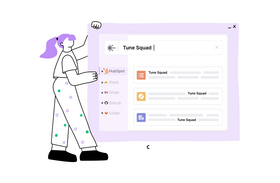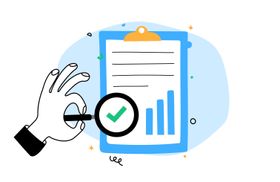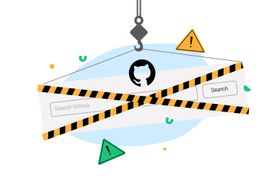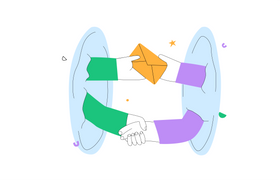4 Simple Steps to Building a Knowledge Graph
Published May 21, 2023

Imagine if Siri or Alexa were tailored to your organization, providing detailed insights to enhance decision making. Sounds exciting, right? That's the promise of a knowledge graph. To help you organize data better, we'll walk you through the process of building one in four simple steps. But first, let's make sure we understand what is a knowledge graph.
It is a way to represent data that emphasizes the relationships between data points in a specific domain—this could be a subject, field of study, business, or organization. To make this more tangible, picture a network where nodes are entities (like two people or any real-world thing), and the edges describe the relationship between those entities (for example, a mentorship). This model allows us to visualize relationships between data and, in turn, unearth insights about an organization, which can inform strategic business decisions.
4 Steps to Building a Knowledge Graph
While the specific technical steps can change based on your goal, the general process for building a knowledge graph remains consistent. Here are the four key steps:
1. Define Your Goals
The first step is to identify the problems your knowledge graph will solve. With the abundance of data available, it's easy to get lost in the details and overload your graph with unnecessary information. Remember, the aim is to extract knowledge from data to support better decision-making. Keep your goals clear from the start.
Some ways you can use your knowledge graph include:
- Analytics Modernization: Improve your organization's efficiency by upgrading to a knowledge graph-based data platform.
- Data Lake Acceleration: An enterprise knowledge graph can connect data lakes and enhance datasets, enabling teams to make better-informed decisions.
- Semantic Search: Get accurate answers quickly, regardless of the structure or location of the underlying data.
These are just a few examples—knowledge graphs have a wider variety of applications, depending on your goals.
✶ Change the way you use Slack search with Unleash
2. Get Stakeholders Involved
The next consideration, of course, is who will be involved in creating the knowledge graph. If you defined your goals in step 1, you'd already have an idea of who these people are. It's best to involve stakeholders early on, especially if they will use the knowledge graph or provide input.
Determine each stakeholder's roles and responsibilities and ensure a team is available to support them throughout the process. Keep refining your objectives as needed to keep stakeholder requirements manageable and to allow you to build your knowledge graph quicker.
Here are some helpful questions to help you through this step:
- Which teams will be using the knowledge graph regularly?
- Who will have access to it?
- Who will be in charge of updating it and ensuring its accuracy?
- Will we introduce external contributors (e.g., suppliers, consultants, clients)?
3. Determine the Scope of Your Knowledge Graph
The scope of your knowledge graph, or your knowledge domain, will broadly be defined by your goals. Initially, it's helpful to ask yourself, “What questions am I trying to answer?” This helps limit the scope of your graph to what is relevant to your goal.
For example, an eCommerce business may identify the following buckets of information for its knowledge graph:
- Product classifications and descriptions
- Product prices and inclusions
- Promos, discounts, and offers
- Warranties and service policies
- Retailers and their details
The ultimate goal is to understand how these categories relate to each other—and where this data is. If needed, request access to any data sources you may need to peruse within your organization.
✶ Is Dropbox search giving you trouble? Learn how to fix it here
4. Select a Platform For Your Knowledge Graph
Before you can start building your knowledge graph, you'll need to decide on the platform you will use. This is a crucial decision because it will stay the same as long as you use your knowledge graph.
Consider factors like whether the platform is open source and if it can be run in-house or in the cloud. It's crucial to pick a platform that aligns with your knowledge graph goals and allows for easy collaboration without the risk of unintentional changes.
Data Quality and Consistency
When building a knowledge graph, it's essential to consider the quality and consistency of your data. Inconsistent data or data filled with errors will lead to a less reliable and useful knowledge graph. Regularly review and clean your data to maintain the accuracy and utility of your knowledge graph.
✶ Learn more about how enterprise search improves internal communication
Organize Your Team's Knowledge Smarter
If you're seeking a smarter way to organize your team or company's knowledge, give Unleash a try. With the proper preparation and research, you can build and maintain an effective knowledge graph that will help you gain valuable insights into your organization's data.
Our Collection tool keeps all related links, documents, and resources in harmony, turning company information into easily accessible employee knowledge. It's intuitive and easy to use, capable of searching across all folders and applications to streamline workflows and boost productivity. Experience the power of Unleash today—it's free!





